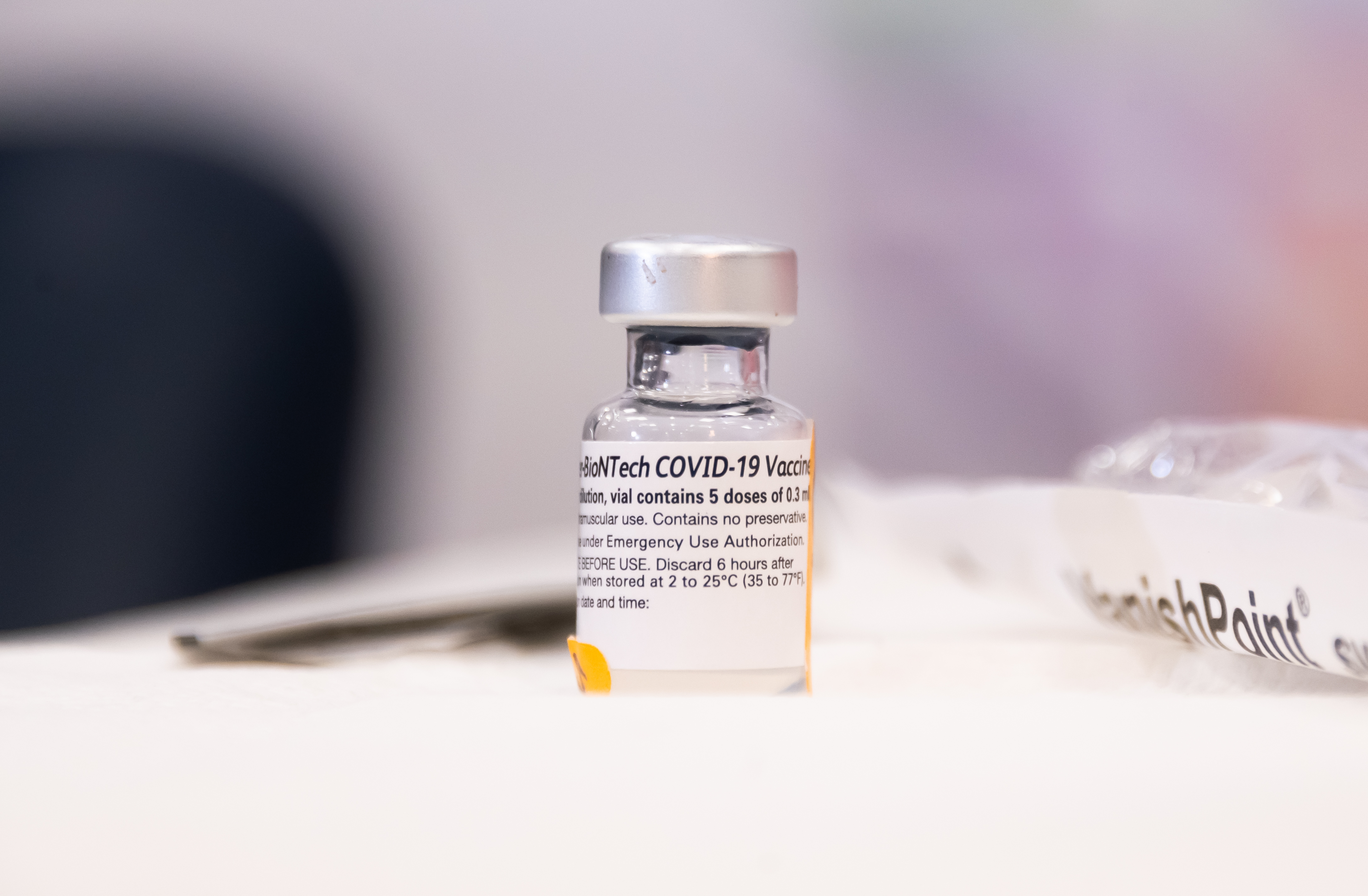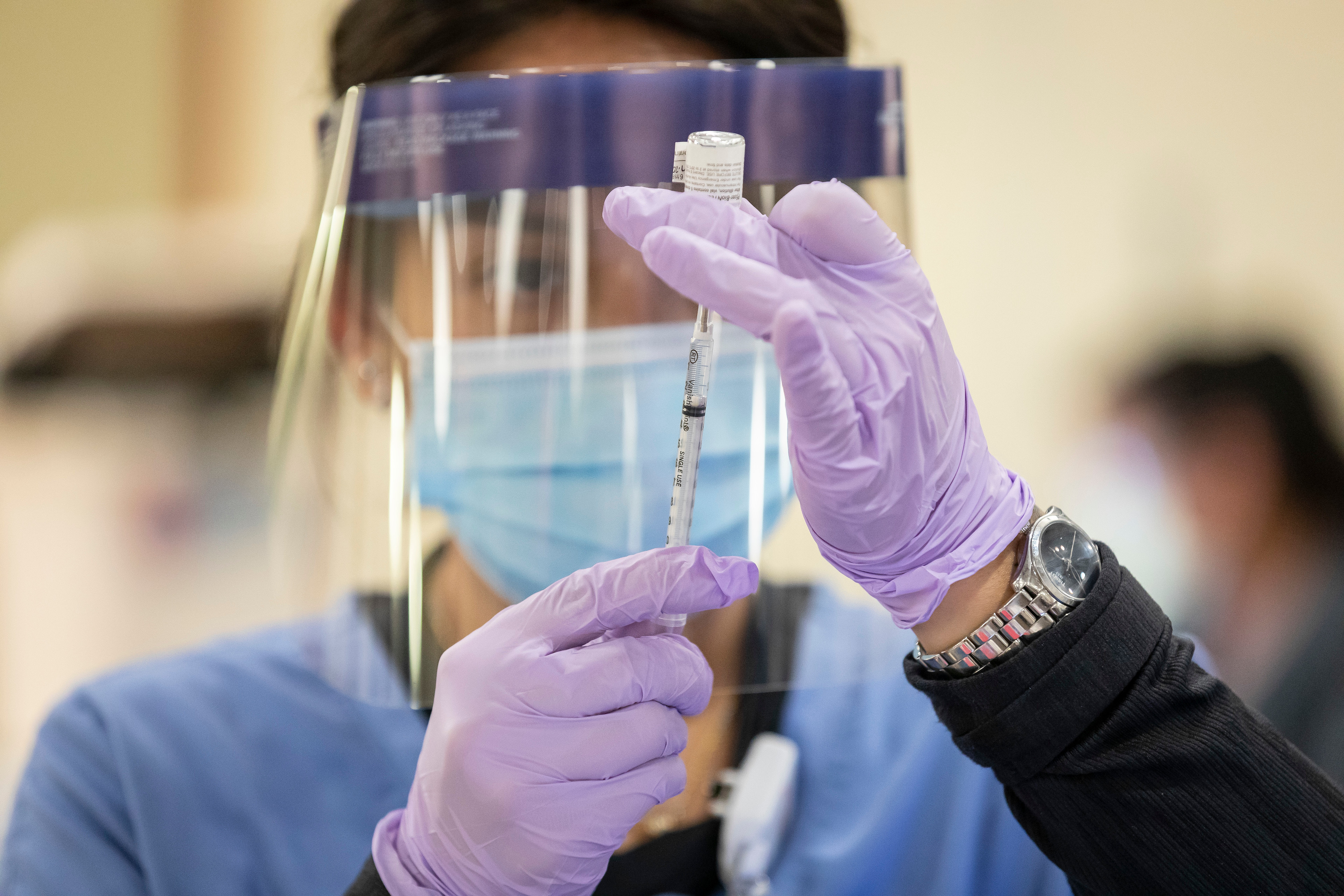
Many of Dr. Renan Mapue’s patients have been seeing him for more than a decade, so when they have questions about a global pandemic that’s killing thousands a day or a new, scary-to-some vaccine, they come to him.
And he’s got a strategy. “I want to remove the politics out of it,” he said from his rural family clinic in Greenfield, Ill., “because a lot of people bring politics to this conversation, which is obviously inappropriate. This is just about health. ”
Mapue and doctors like him are trying to encourage their patients to get a vaccine, but they have a big task ahead of them. National surveys continue to show that rural residents make up one of the largest shares of vaccine-hesitant America.
In late December, a Kaiser Family Foundation survey on attitudes towards the vaccine showed vaccine hesitancy is highest among Republicans (42%), those ages 30-49 (36%) and rural residents (35%).
And rural doctors battling this hurdle are doing so with under-resourced county health departments, misinformation on social media and, at times, local lawmakers who don’t believe a vaccine is the answer.
This, while COVID-19 hits rural communities across the country and in Illinois hard. In Greene County, where Mapue works, average positivity rates have ranged from 9.8-17.5% in the past month. While COVID-19 was slow to hit rural areas, it has since surged. But despite that, many rural residents don’t believe the virus is all it’s cracked up to be.
“I don’t feel this virus warrants a rushed vaccine”
Half of rural residents surveyed said the seriousness of coronavirus is “generally exaggerated” compared to 27% of urban residents and 37% of suburban residents. They also believe, about 62%, that getting vaccinated is a personal choice, as opposed to a collective responsibility.
Those sentiments hold true for a 48-year-old lifelong resident of Streator, a town about 100 miles southwest of Chicago. He asked WBEZ not to use his name, fearing he’d face ridicule for choosing not to take a COVID-19 vaccine.
“Maybe [I’d take it] about 10 years from now, if people aren’t having a bunch of side effects,” he said. “I probably wouldn’t even do it then. I don’t feel this virus warrants a rushed vaccine. … I kind of feel that’s what we have an immune system for.”
He believes a COVID-19 vaccine should be given to elderly people and those with pre-existing conditions “if they want it.” But he thinks herd immunity — the concept that the pandemic will dissipate once 70-90% of the population is immune — should come from a majority of the general population contracting the virus, not through a vaccine. (That, of course, would lead to an untold number of additional deaths, as the virus is deadly among young and healthy individuals as well as the elderly).
There’s an overlap between vaccine hesitancy among Republicans and those living in rural areas. But, when controlled for political leaning, KFF found rural residents are still less likely to want a vaccine than urban and suburban dwellers.
“That don’t surprise me,” the Streator resident said. “In a bigger city … you got more public transportation, and people are more cramped [than in rural towns],” he said, saying urban residents are more exposed to the virus.
But, according to the survey, proximity to COVID-19 did not factor into people’s willingness to take the vaccine. Respondents were asked how many people they know had contracted COVID-19, and answers did not vary significantly among rural and urban residents.
Health care workers face steadfast opposition to the vaccine, even among their own ranks. But experts say vaccine education from close, trusted sources is essential to changing people’s minds.
“Trusted messengers”
The burden of educating residents on vaccination efficacy has partially fallen on local county health departments, which have been flooded with vaccine and COVID-19 inquiries since the pandemic started. Many have responded by increasing their presence on social media, revamping outdated web pages, or even creating geo-based COVID-19 statistic trackers.
A WBEZ scan of rural county health department websites and social media show that a large majority of them have updated information about local vaccination progress.
Which is good news for rural residents seeking information. The KFF survey found that rural residents are more likely to trust their local health department (64%) than trust state health officials (55%).
But many county health departments are under-resourced, facing significant staffing shortages or don’t have the expertise to create messaging about the vaccine to combat skepticism, according to Adee Athiyaman, a researcher at the Illinois Institute for Rural Affairs.
In response to a WBEZ email to county health departments about how they’re combatting vaccine skepticism among residents, an administrator from the Knox County Health Department wrote back apologizing for a delayed response:
“Another phenomena we are facing is not being able to replace or hire staff. No one wants to come work with the COVID-19 workers I suppose. As such we are all wearing MANY hats. For example, we have not had an emergency preparedness person for MONTHS … so there are two or three of us filling the role, myself included,” she wrote.
Other departments throughout Illinois have had to turn off comment sections on Facebook pages, because they didn’t have enough staff to monitor and prevent the spreading of misinformation.
What’s more, Athiyaman said, is that mistrust of public health officials at the national or state level, where partisan arguments over the pandemic’s severity have played out, can and does trickle down to mistrust of local governments, including public health officials.
Still, he says the Illinois Department of Public Health should spearhead programs to help local doctors address hesitancy among rural residents across the state. IDPH did not respond to requests for information about any ongoing efforts or plans to combat rural hesitancy.
For now, the task of vaccine education at the local level is largely being left up to individual doctors, who hold a lot of trust within their communities, to go above and beyond to reach residents in a meaningful way.
Doctors as “influencers”
Dr. Jeff Ripperda is a family doctor in Murphysboro, a town of about 8,000 in central Illinois, and has been seeing patients for 13 years. He said he’s been flooded with questions about the vaccine from people who really trust him.
“These are people who, not only do I play a major role in their health care, but also these are community members, these are people whose kids and my kids go to school together, people who I see around town, people who I socialize with.”
He said he didn’t use social media much before the pandemic, but he’s started to log on more frequently to share accurate information about the virus and the vaccine.
“Just trying to put the research into regular human language and demystify what’s going on with the vaccine,” he said.
And he thinks it’s working — he gets hundreds, sometimes more than a thousand, shares on most posts.
“And I get people around town who I don’t know telling me, ‘Hey, I saw your post,’ ” he said. “I’ve had a couple people tell me that those posts were the reason they’ve decided to get the vaccine.”
Dr. Mapue, from Greenfield, said he’s trying to influence the old-fashioned way. He’s planning to partner with churches and the health department to hold forums where residents can ask their doctors questions about the vaccine.
Experts say, whether digital or in-person, this could be the most effective tool in combating vaccine hesitancy among rural Illinoisans.
“We’re talking to physicians that are influencers, which is like a whole new thing that I really haven’t spent a lot of time doing in the past,” said Ashley Kirzinger, one of the authors of the KFF survey who’s looking into effective messaging in rural communities.
“People follow physicians on TikTok or other apps … so that seems to be an important source of information,” Kirzinger said. “This may be a group, you know, that has never been called on before to do this type of public health work. But it seems they would be right for it.”
While KFF’s survey shows a large majority of rural Americans (86%) trust their own doctor or health care provider to give them reliable information about a COVID-19 vaccine, it’s not a given they’ll pay attention. And talking to the vaccine or COVID-19 skeptics that do engage hasn’t been easy on doctors either.
“I’ve been questioned … about the legitimacy of what we’re doing, if we’re holding up a facade,” said Dr. Joey Jackson, a rural clinic doctor in Eldorado, pop. 4,000, about 30 minutes away from Kentucky.
“I never expected that in my profession and at that point, it gets pretty dark … because it’s, like, well, who am I trying to save? I’m trying to save people who think I’m a fraud … but at the same time I think it’s important you rise to the occasion.”
Ripperda said while he’s spoken to several patients who’ve been on the fence about getting a vaccine, he suspects those who’ve already made up their minds don’t want to talk to him.
In Streator, the vaccine-hesitant resident tells WBEZ he does have a family doctor who he feels would give him trustworthy information about the vaccine.
But, he said, he doesn’t plan to call him.
COVID-19 Update: The connection between local and global issues–the Pulitzer Center's long standing mantra–has, sadly, never been more evident. We are uniquely positioned to serve the journalists, news media organizations, schools, and universities we partner with by continuing to advance our core mission: enabling great journalism and education about underreported and systemic issues that resonate now–and continue to have relevance in times ahead. We believe that this is a moment for decisive action. Learn more about the steps we are taking.














